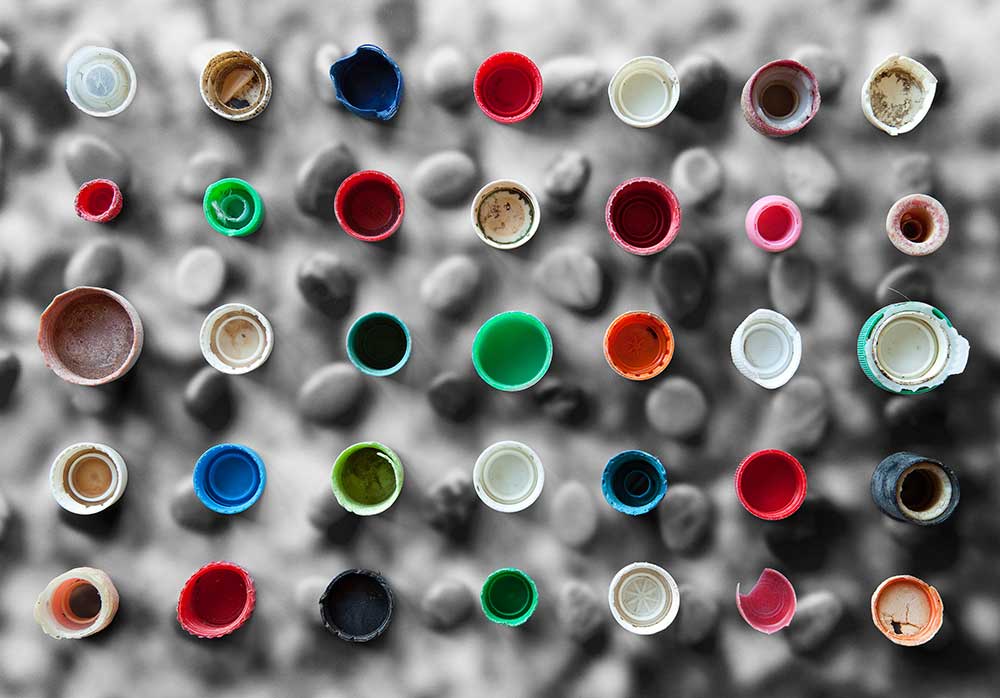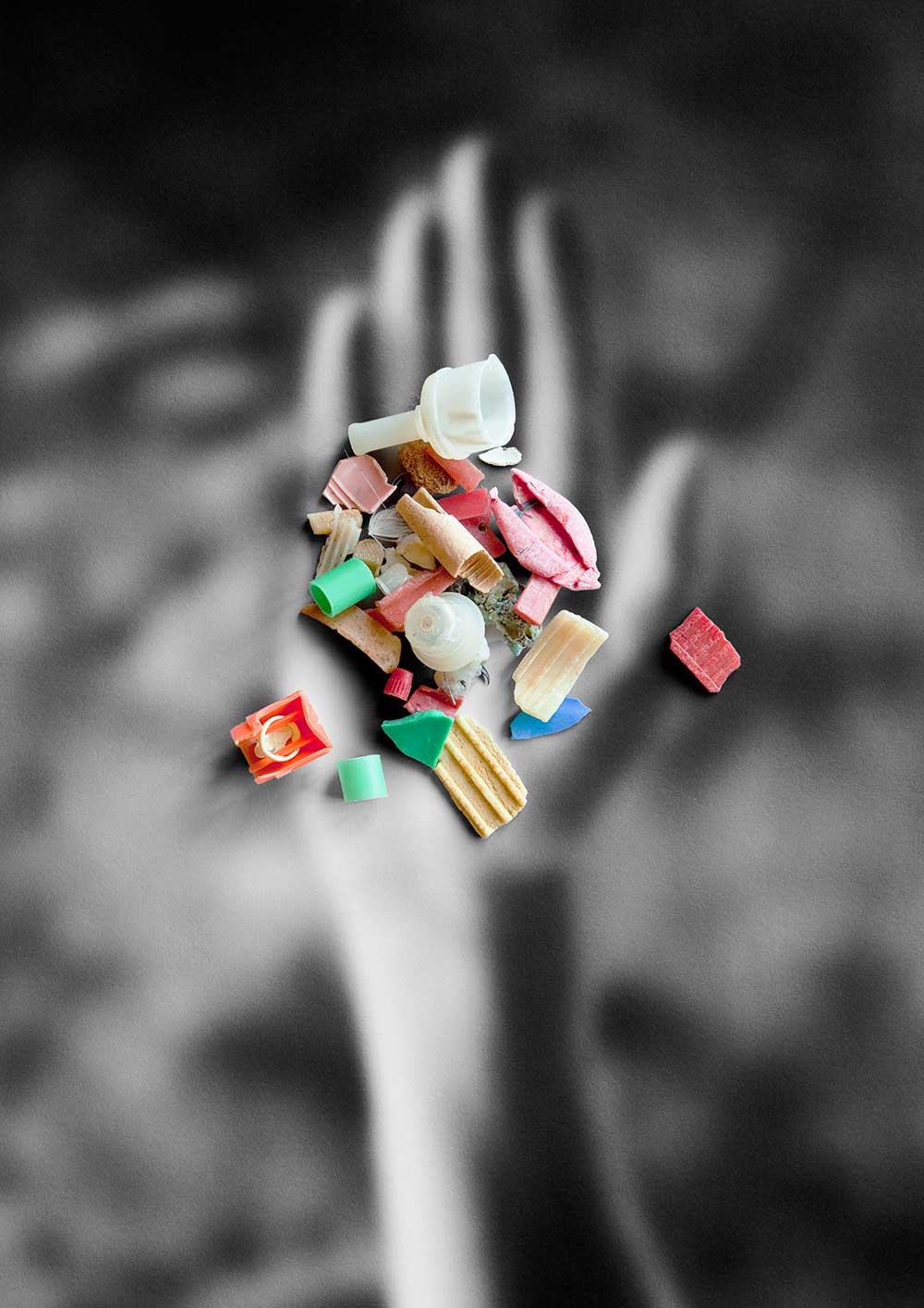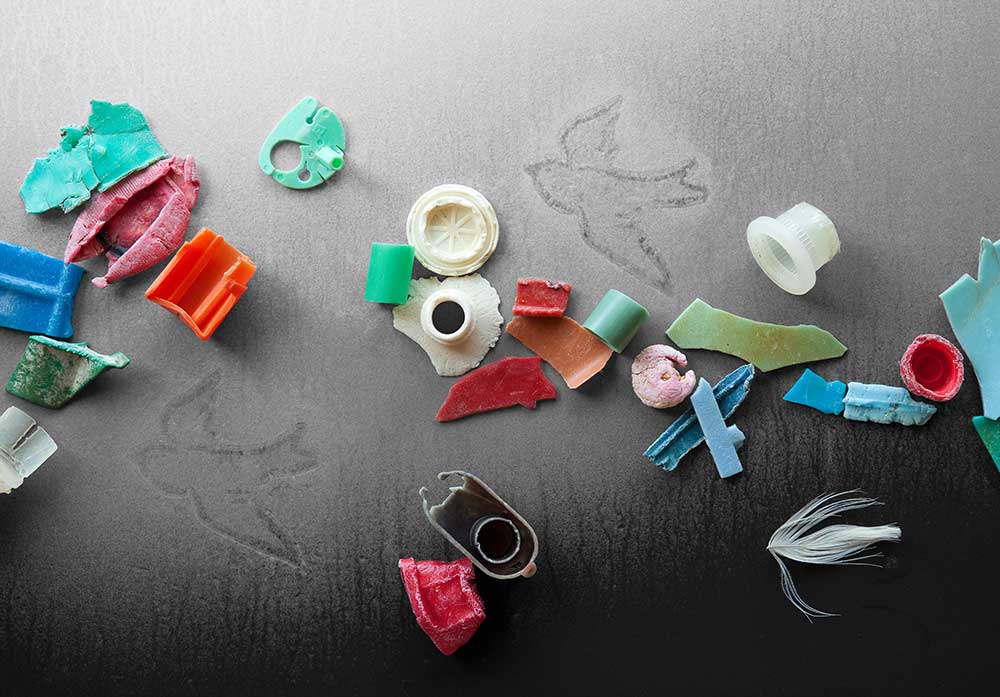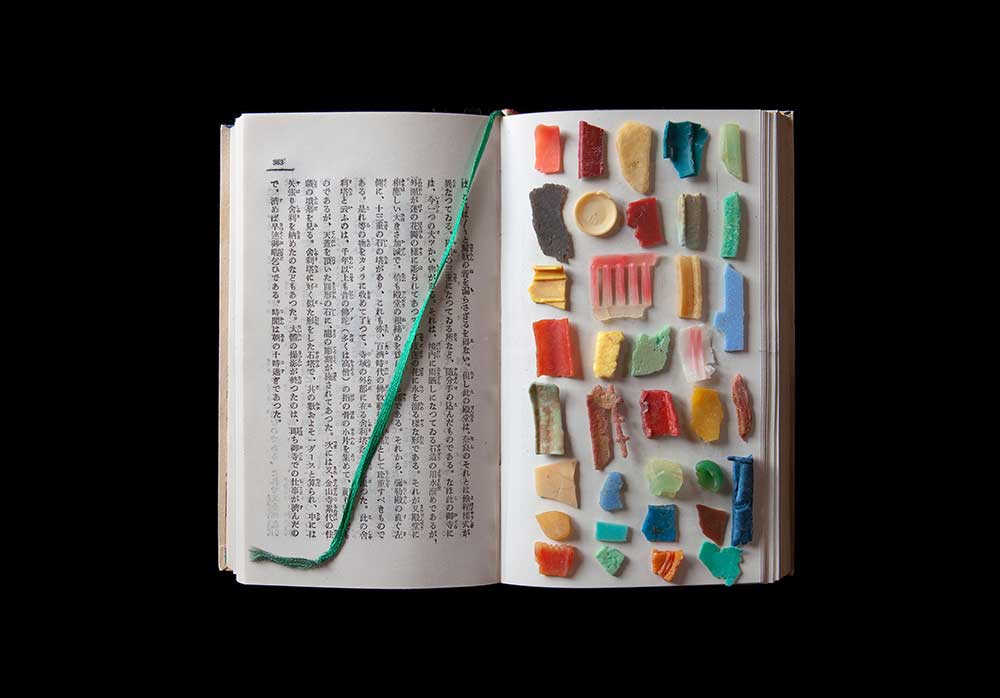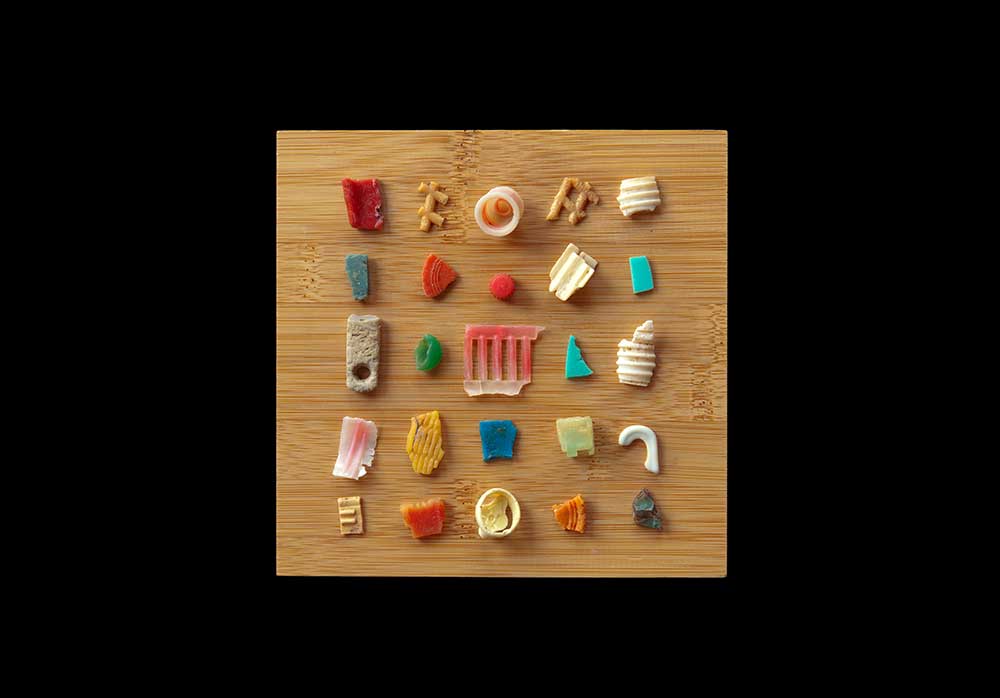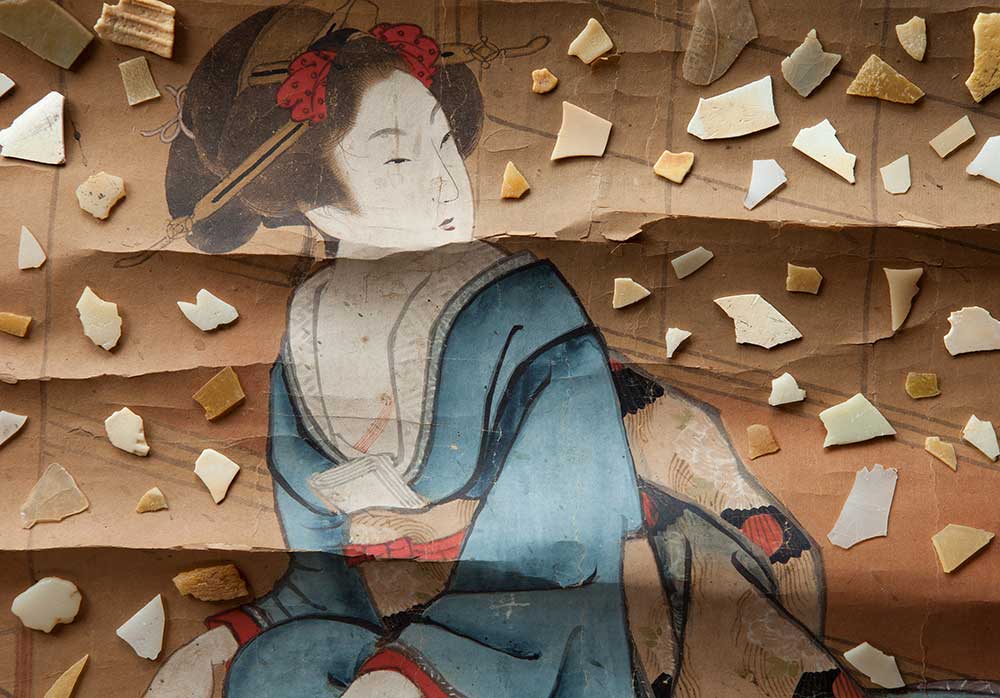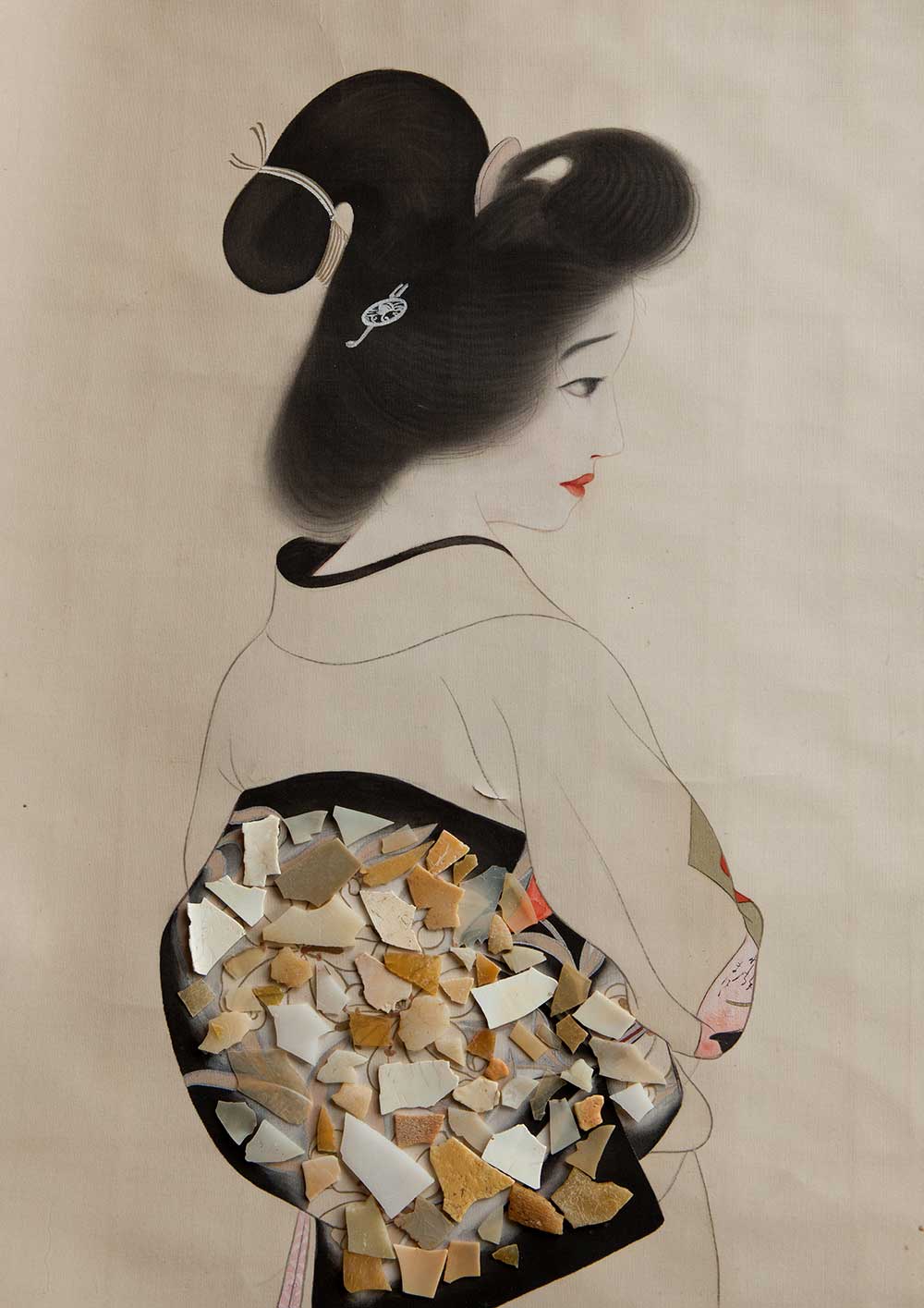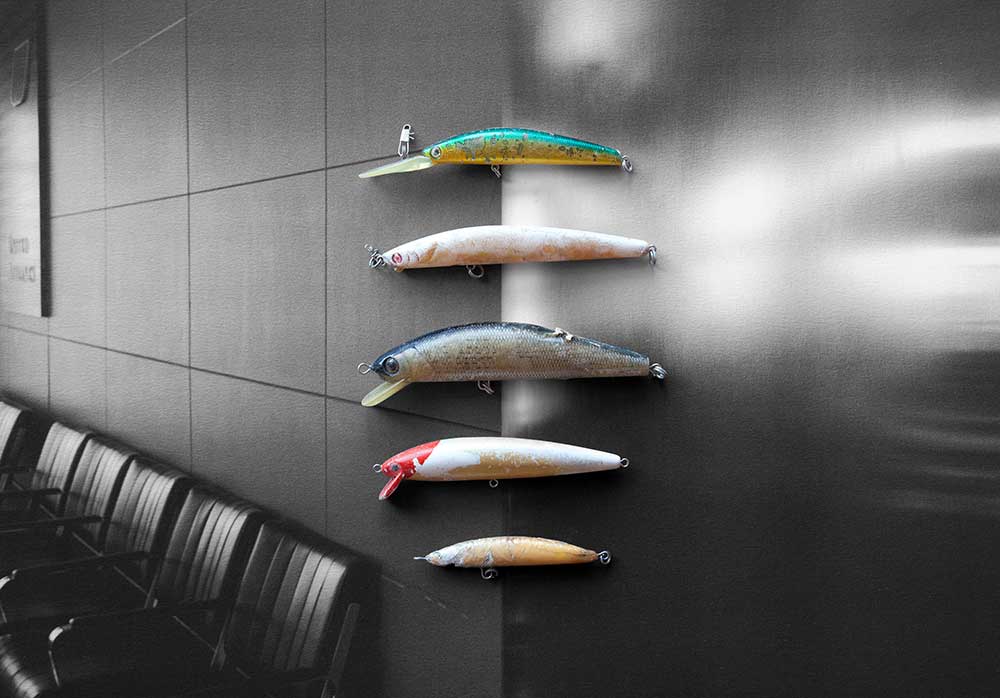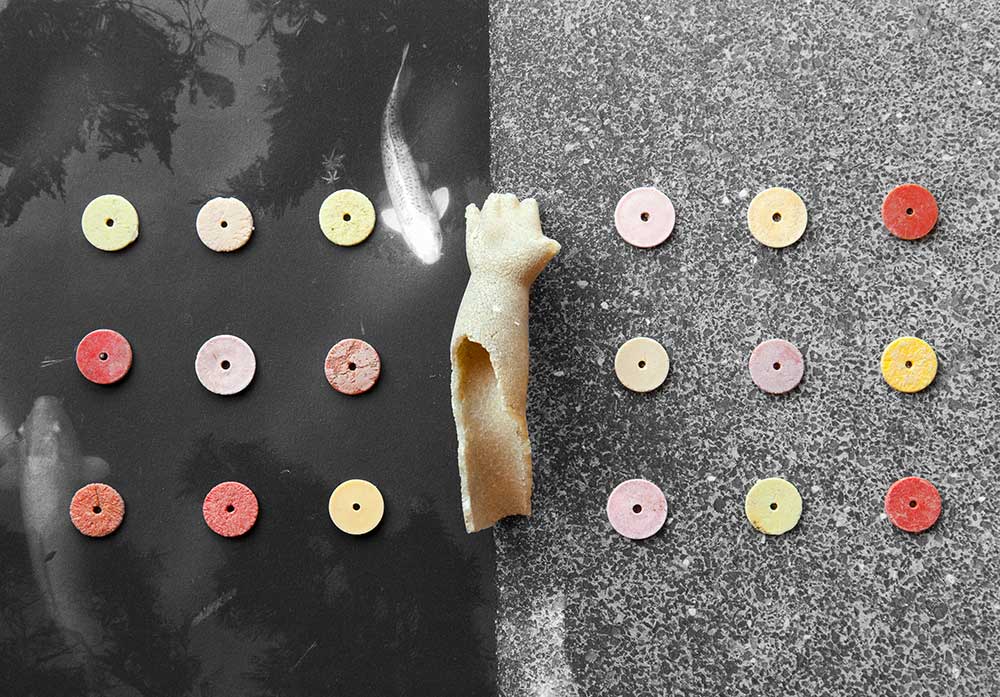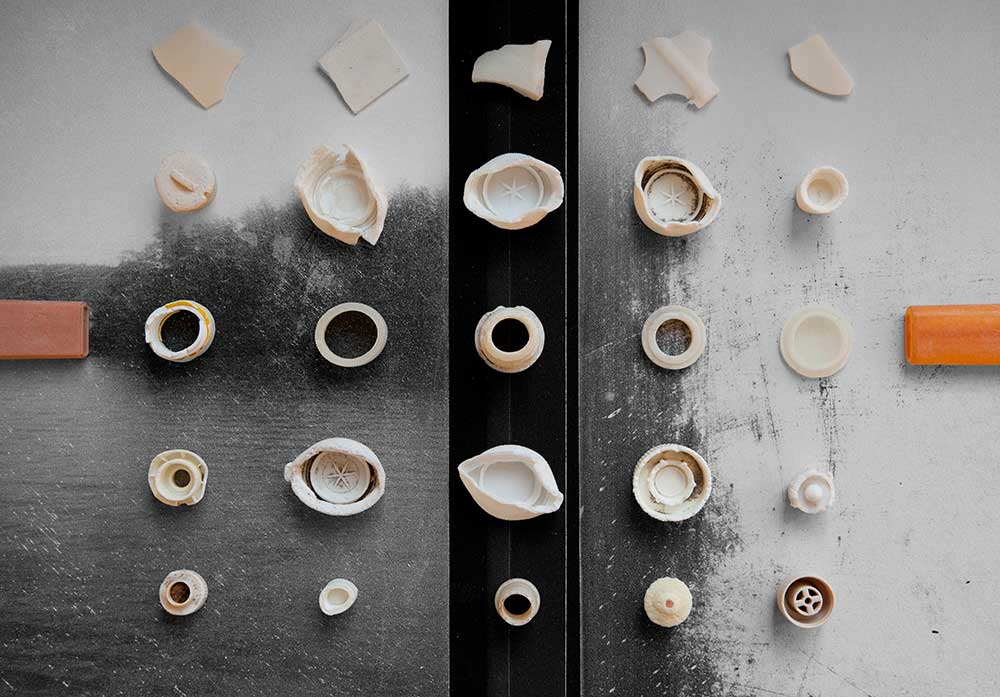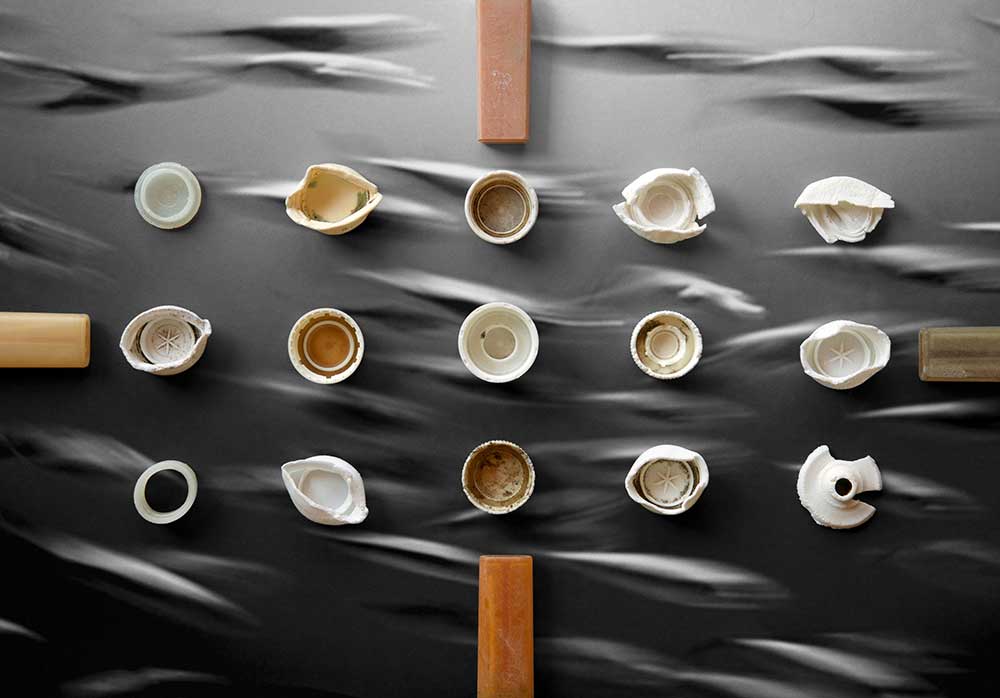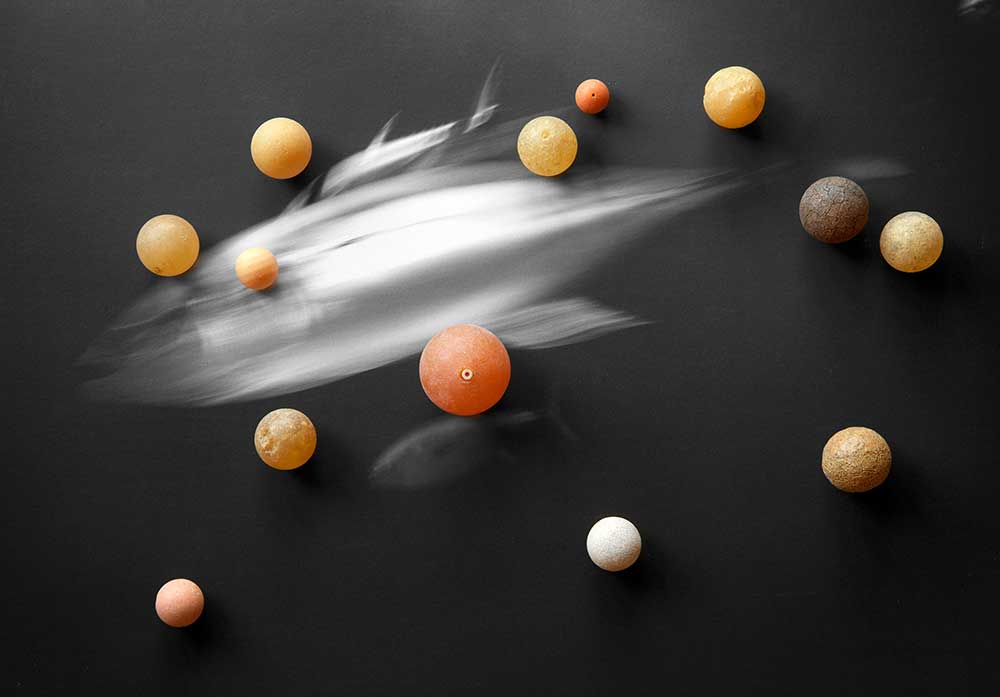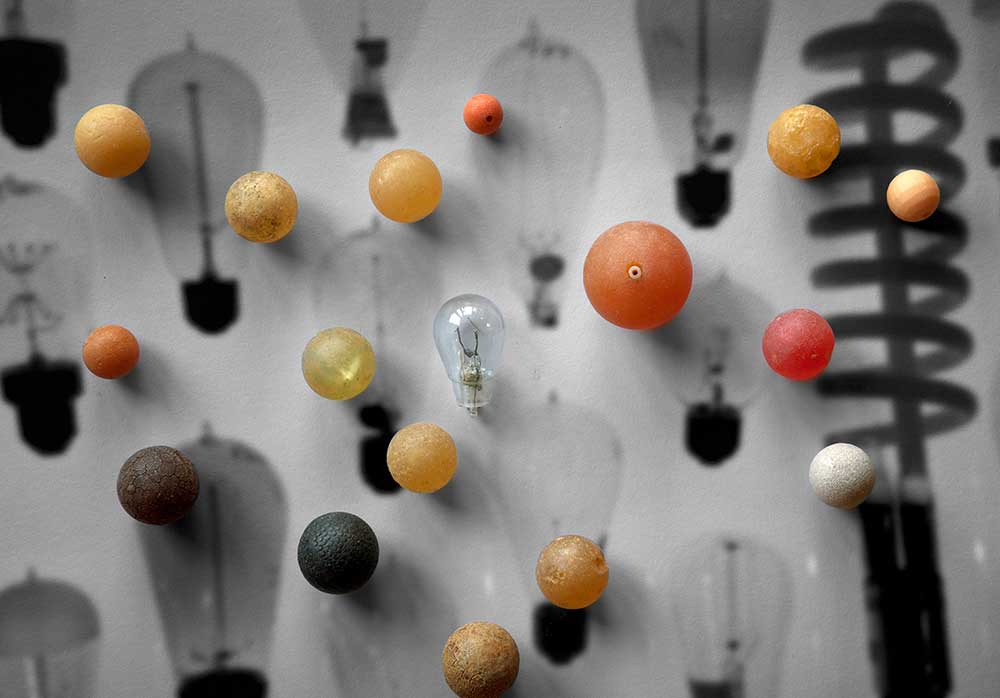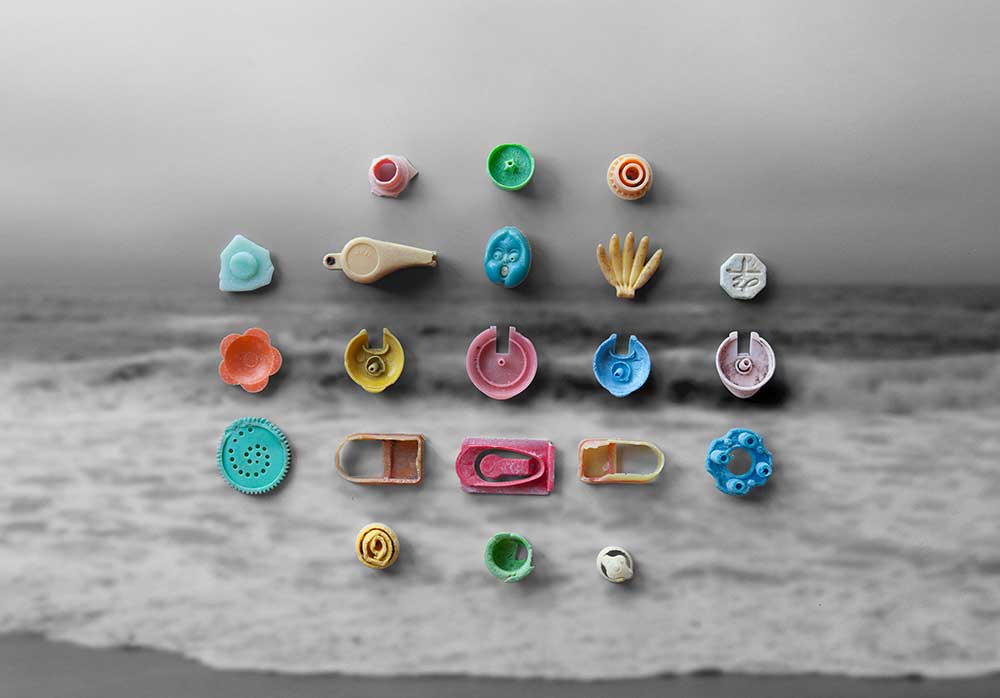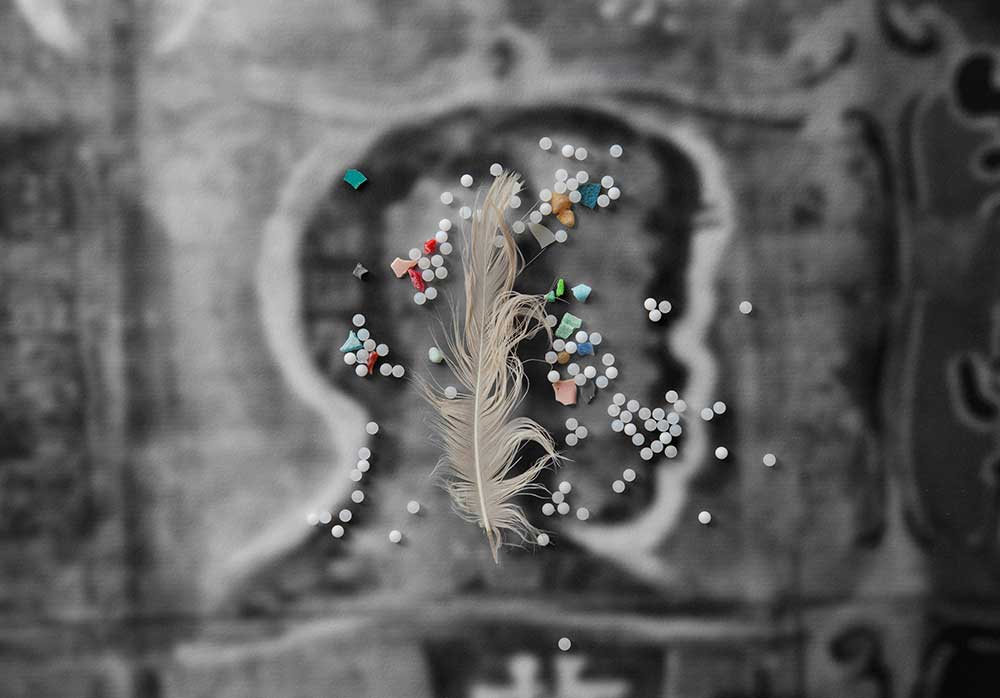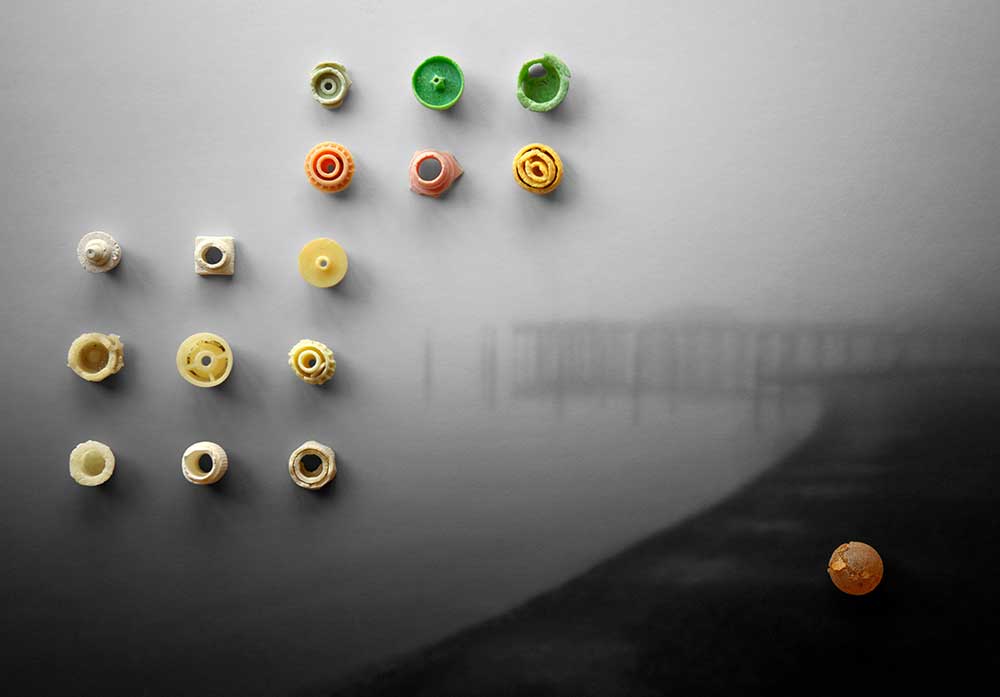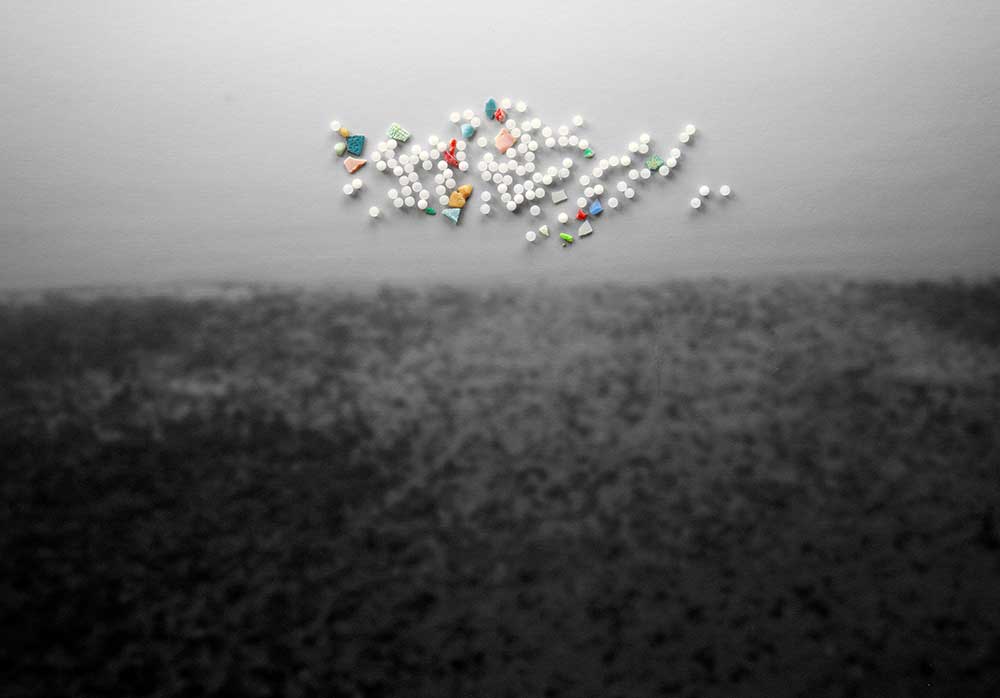In 2010, I watched a documentary on the Monterey Bay Aquarium in which a volunteer held up a jar for the audience to see. She explained that the colorful plastic pieces filling the jar were collected from the remains of a dead albatross on Midway Atoll.
Countless albatross, mistaking floating plastic debris for food, die each year of starvation. Plastic debris, recovered from dead albatross on Midway Atoll, is the subject of False Food. I’ve been criticized for not being more aggressive in my representation of this crisis. It’s my belief that negative images tend to cause feelings of helplessness and overwhelm in people. Warnings of terror can become acts of terror themselves—triggering fear. In lieu of proliferating horrific images of ocean plastic pollution, False Food chooses to make transformative statements to raise consciousness rather than numb it. The intent of these images is to bring awareness of the problems of plastic pollution by engaging the viewer through aesthetics and reframing rather than fear.
The plastic pollution crisis that overwhelms the oceans is also a significant and growing threat to the Earth’s climate. Greenhouse gases are emitted at each stage of the plastic lifecycle—extraction and transport, refining and manufacture, and waste management. Plastic at the ocean’s surface continually releases methane and other greenhouse gases, and these emissions increase as the plastic breaks down. Plastic on coastlines, riverbanks, and landscapes release gases at even higher rates. Microplastic in the ocean may interfere with the ocean’s capacity to absorb and sequester carbon dioxide. We live in a disposable culture. We also live in a closed ecosystem. What we throw away we ultimately consume, through breathing, drinking, and eating. Unlike organic debris, plastic doesn’t biodegrade—it photo-degrades into smaller and smaller particles, absorbing toxins along the way until it becomes a soup of toxic molecular plastic. At this size, it enters the food chain and we become the albatross.
About Jerry Takigawa
Jerry Takigawa is an independent photographer, designer, curator, and writer. Takigawa’s work has been exhibited nationally and internationally in museums, galleries, and alternative spaces. He has been the recipient of a variety of photographic honors and awards including the Imogen Cunningham Award; nominated for the Santa Fe Prize; twice nominated for the Prix Pictet; Critical Mass Top 50; the Clarence John Laughlin Award; Lens Culture, Fine Art Photography Awards Finalist; NY Center for Photographic Art, Humans, First Place; CENTER Awards, Curator’s Choice, First Place; the Rhonda Wilson Award; Foto Forum Santa Fe’s Annual Photo Award; and a California Arts Council 2023 Individual Artist Fellowship. Takigawa studied photography with Don Worth at San Francisco State University and received a BFA with an emphasis in painting. His work is in many permanent collections including the Museum of Fine Arts, Boston; San Francisco Museum of Modern Art; Brooklyn Museum; Crocker Art Museum, Sacramento, CA; Santa Barbara Museum of Art, Monterey Museum of Art, the Japanese American Museum of Oregon, and the Library of Congress. His monograph, Balancing Cultures, was published by Dayo Press in 2021. Takigawa was born in Chicago, Illinois. He lives and works in Carmel Valley, California. [Official Website]



